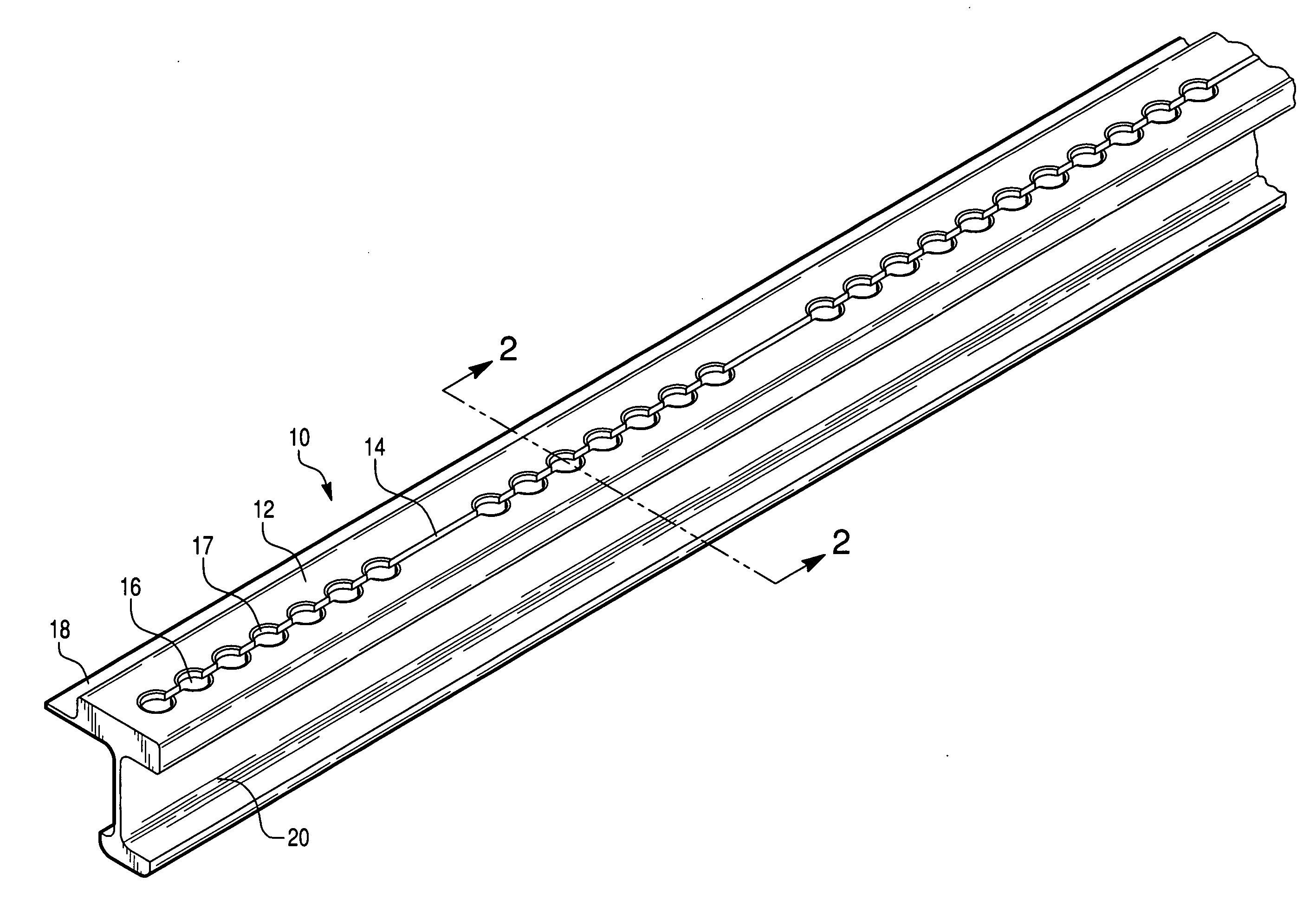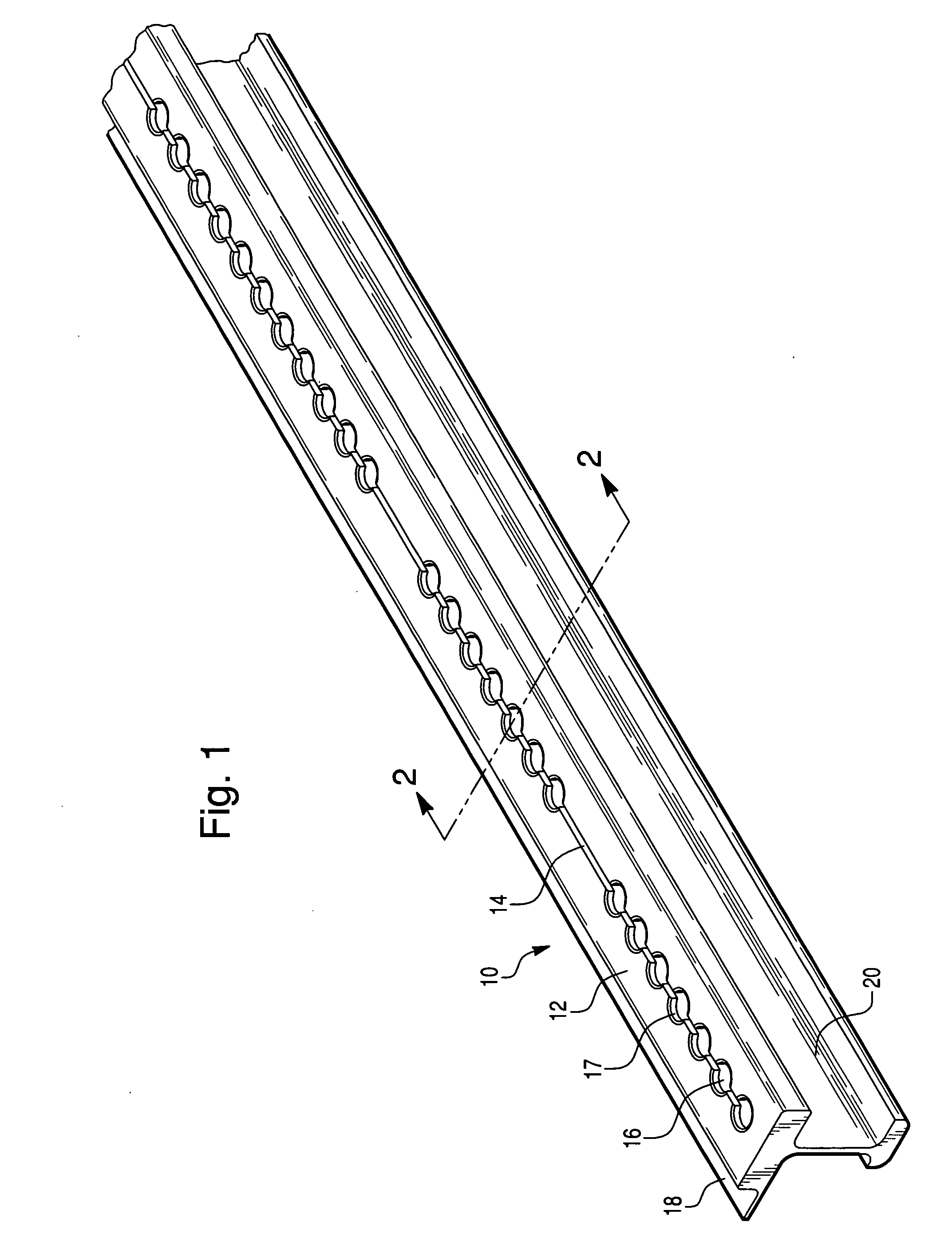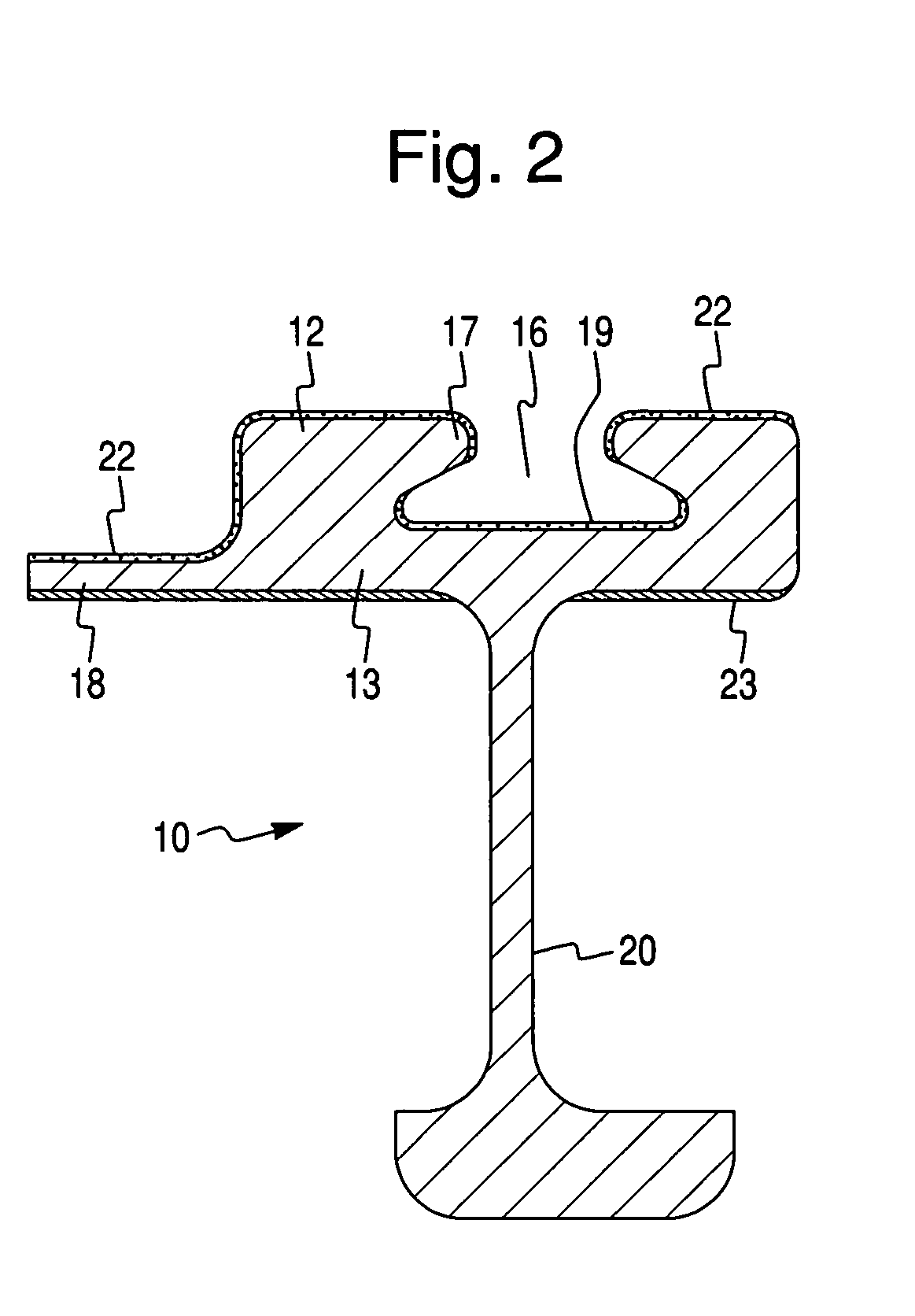Corrosion-resistant coating for metal substrate
a technology of corrosion resistance and metal substrate, which is applied in the direction of manufacturing tools, solventing apparatus, transportation and packaging, etc., can solve the problems of limited use of cladding for protecting structural aluminum surfaces, structural aluminum alloys formed in more complex geometries, and corrosion resistance, so as to improve wear resistance, provide corrosion resistance, and high strength
- Summary
- Abstract
- Description
- Claims
- Application Information
AI Technical Summary
Benefits of technology
Problems solved by technology
Method used
Image
Examples
example 1
[0026] A coating composition is prepared comprising 50 vol. % of a powder mixture containing 97 wt. % aluminum particles and 3 wt. % zinc particles, and 50 vol. % of an alumina powder having an average particle size of about 500 microns. The composition is sprayed onto 4-inch by 4-inch aluminum panels by HVOF spraying at a flame temperature of 5,000° F. and a coating rate of 7 lb / hr. The nozzle is spaced 1.5 feet from the panels. A hard, dense, and smooth coating results on the panels.
example 2
[0027] Particles of an aluminum alloy comprising 98 wt. % aluminum, 1.5 wt. % manganese, and 0.5 wt. % copper are mixed with a ceramic powder comprising 85% silicon carbide and 15% silicon nitride. The ceramic has a particle size ranging from about 100-1,000 microns. The ceramic powder comprises 40 vol. % of the coating mixture. The coating mixture is applied onto 4-inch by 4-inch aluminum panels using HVOF spraying at a flame temperature of 5,000° F. and a coating rate of 20 lb / hr. The spray nozzle is placed 1.5 feet from the aluminum panels. A dense, hard coating results.
example 3
[0028] A coating composition is fed to an HVOF thermal spraying device for coating 4-inch by 4-inch aluminum panels. The coating composition comprises an aluminum alloy precursor comprising 95 wt. % aluminum particles and 5 wt. % zinc particles. A matrix comprising 95% alumina and 5% silica makes up 40 vol. % of the coating composition. The matrix component comprises particles ranging in size from 50 microns to about 750 microns. The aluminum panels are provided with an even, hard, dense coating. The aluminum particles and the zinc particles form an alloy during the spraying process.
PUM
| Property | Measurement | Unit |
|---|---|---|
| wt. % | aaaaa | aaaaa |
| temperatures | aaaaa | aaaaa |
| pressures | aaaaa | aaaaa |
Abstract
Description
Claims
Application Information
 Login to View More
Login to View More - R&D
- Intellectual Property
- Life Sciences
- Materials
- Tech Scout
- Unparalleled Data Quality
- Higher Quality Content
- 60% Fewer Hallucinations
Browse by: Latest US Patents, China's latest patents, Technical Efficacy Thesaurus, Application Domain, Technology Topic, Popular Technical Reports.
© 2025 PatSnap. All rights reserved.Legal|Privacy policy|Modern Slavery Act Transparency Statement|Sitemap|About US| Contact US: help@patsnap.com



